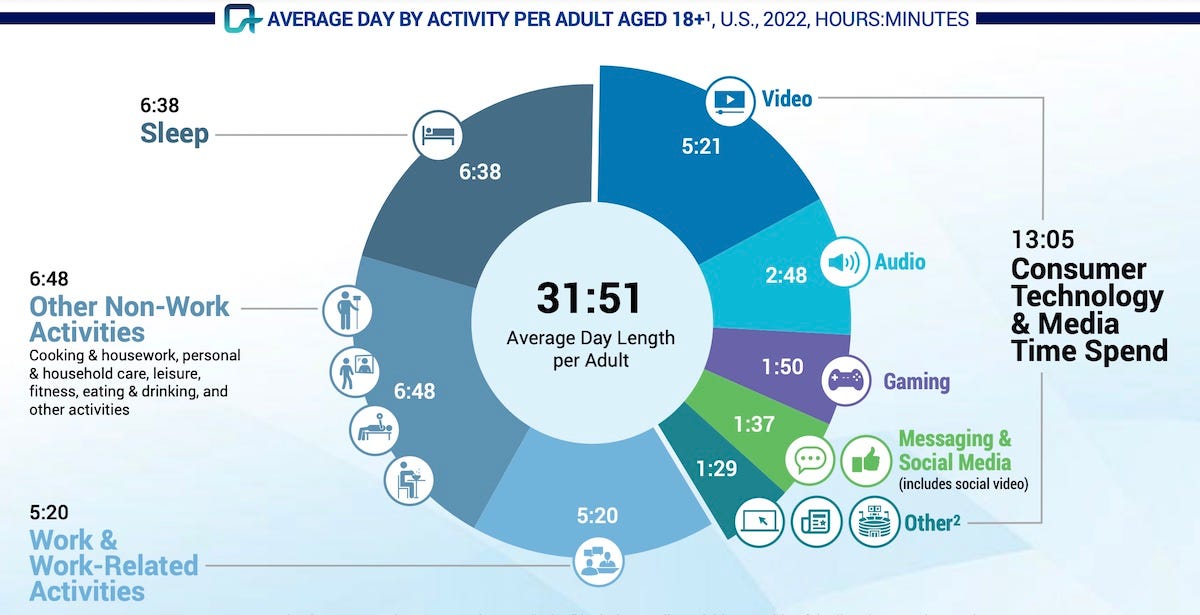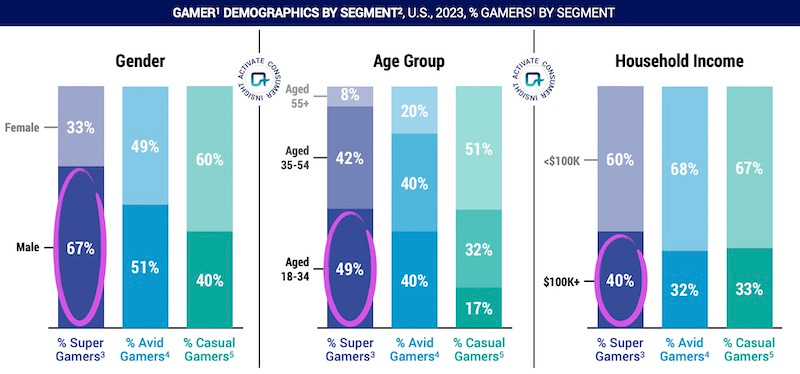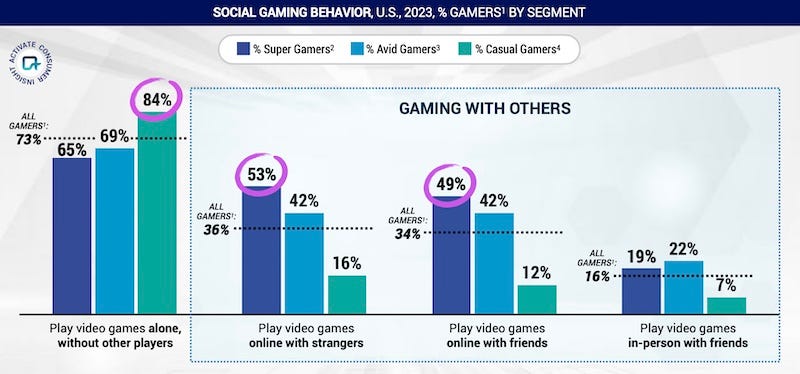What can we learn from Lethal Company's huge success?
Publikováno: 15.11.2023
Quite a lot, we think. Also: a whole load of discovery news for your brain.
[The GameDiscoverCo game discovery newsletter is written by ‘how people find your game’ expert & company founder Simon Carless, and is a regular look at how people discover and buy video games in the 2020s.]
Welcome to your Wednesday newsletter, folks, which comes with an important note. Due to the U.S. Thanksgiving holiday, there will be no newsletters from us next week. None. Zip. Zero. Hey, you can catch up on all the old ones you didn’t read yet!
It’ll be fairly quiet next week on Steam for new releases, too, since the Autumn Sale starts on Nov. 21st. So our Plus (paid-exclusive) newsletter this Friday will go through the next two week’s debuts, with full Hype scores and context.
And yes, sign up to GameDiscoverCo Plus and support us if you haven’t - and would like to get a better idea (in data/write-ups!) of why specific games hit big on PC and console in 2023. (You also help to fund our time to do these free newsletters.)
Lethal Company - key lessons from its virality?
So, we’ve been itching to talk about co-op ‘scavenging x goofy horror’ PC game Lethal Company for a couple of weeks now. But we had other already scheduled newsletters to write! And in the meantime, it’s just been getting more and more viral.
BTW, in case you’re wondering how it works, VanossGaming explains in the above ‘Let’s Play’ video: “We’ve been sent on this ship, we’ve got to go to different planets, and we’ve got to collect scrap… and if we don’t hit our profit quota, we die.” But there might be some, uhh, non-human life forms that could prevent you from harvesting your junk…
How many of you have heard of it or checked this game out, even now? (OK, more so than 2 weeks ago, but hey.) It’s one of those classic games with near-zero traditional media coverage - it has no Metacritic-eligible reviews, for example - but incredible influencer and ‘word of mouth’-centric virality.
Proof? Heck, look at its SteamDB CCU (concurrent user) graph for the past couple of weeks - from a Day 1 launch CCU of around 600 average to this:
This is the kind of ‘true’ virality chart you see (almost always for multiplayer games) once or twice per year. We did a piece on Among Us, which did similar in 2020, and social deception game Dread Hunger had a similar trajectory (mainly from China) in 2022.
This isn’t a game where we have massive behind-the-scenes insight. But.. it’s big! We estimate Lethal Company, which is a $10 ‘buy once’ game that’s English language only right now and has 88% of its reviews in English, at 642,000 copies sold and $5.7 million Steam gross since its Oct 23rd launch. And we’d expect it to sell millions more units.
So what does it tell you about the state of PC and console games in 2023? Lots of things, we think. Here’s what we got from it:
Creating shared experiences is how multiplayer games go viral: there are some amazing design decisions in Lethal Company! There’s echo mods on voice to add atmosphere, the dangers you meet are a) deadly and b) very fast, so you lose contact with colleagues just after they yell there’s a problem.. terrifying! But silly too. It has a great ‘looting’ core game loop. And there’s lots of emergent gameplay weirdness like colleagues getting crushed by the shuttle.
Production value? Not necessarily what people buy games for: conventionally great-looking art and animation is fine. But in a world where Roblox and Minecraft are very much accepted, Lethal Company’s ‘goofy but creepy’ lo-fi visual aesthetic works. And the downright silly run animations actually add to the fun.
Viral games can and will rise up from a mass of hobbyist/semi-pro titles: the pseudonymous solo dev of Lethal Company, Zeekerss, is a former Roblox UGC creator who says he heavily iterated this game - with much user testing - over about a year and a half, documenting things on his Patreon. (He’s previously had some $5 single-player horror games of note, but this is a larger scale of project.)
‘Great ideas x lots of iteration’ don’t have a minimum dev cost cap: this wasn’t a ‘fluke hit’ that magically appeared fully-formed. A ton of work went into it - it’s a really clever, witty game that works because it was polished. (Not graphically, perhaps - but where it counts, in the ‘human joy maximization’ department.)
Lethal Company also concentrates on co-op ‘looting and panicking’ rather than heavy gunplay. It’s a refreshing change that makes it very accessible to lower-skill players.
And the game isn’t bereft of social message either. In the video above, VanossGaming, goofing on your role in the game as “wage slaves” who traffick metal scraps to a shadowy company for a mere percentage of their worth, joked: “is the company YouTube?” Yes, there’s extreme ‘gig economy’ vibes here.
So we dig open platforms like Steam that allow hits from tiny devs like this to happen. But yes, the disruption to the traditional game industry is obvious. As I said in the GameDiscoverCo Plus Discord earlier: “I guess games are increasingly (in the non 'massive F2P/AAA' area) becoming a hobbyist/semi-pro industry with some serious upside.”
You can still make it work as a pro publisher/dev, of course! But when a solo dev like this can license Unity for near-zero cost* (*for now!), then scale his game to 500k+ players and multiplayer to 50,000 CCU without technical issues/extra $, you do have to say - wow, the game biz has been truly democratized.
How do game biz trends fit into wider media ones?
So, media advisory firm Activate Consultingputs out a giant 200-page slide deck [.PDF] every year which “forecasts the key trends and presents the most important insights in the technology and media industries in the year ahead.” (The older ones are available here.)
With the 2024 Outlook now available as of a few weeks back, we took a look at it, for all you slackers who don’t want to read a 200 page .PDF in addition to your full work week. And here’s what we’ve got for you:
People play video games a lot - and also multitask: we love the above graph, which shows: “multitasking leads to a nearly 32-hour day for the average American, with over 13 hours spent using technology and media.” So that’s almost 2 hours/day of games played by U.S. adults, only some of which is while watching Bake-Off.
Multitasking is most common while listening to music: according to Activate, 71% of people do something else while bopping to tunes, vs. 59% (podcasts), 46% (social media), 43% (watching videos), 33% (video games), and 23% (reading books!)
‘Super users’ drive a lot of video game consumption: 24% of the U.S. population is responsible for 79% of its video game spend (at $41 per month), vs. the other 76%, who spend at just $4 per month. (The trend for video spending way is less extreme, with only a 2x $ difference between super-users and everyone else!)
That’s a lot of the top-line comparisons that start off the report. Though there’s also a detailed section (Page 93 of the .PDF) purely about video games, with $ industry estimates & differentiating ‘Super users’ from more casual players.
One interesting area (above) is the survey’s definition the demographics of those higher-engagement, higher-spend players: “Gamers in each segment are behaviorally and demographically distinct; Super Gamers are more likely to be male, young, and high-income.”
Some other notable stats: Activate noted that compared to its 2018 survey, when 43% of gamers identified as ‘multi-platform’ players, 61% of all of its respondents now play games on multiple types of device (VR vs. mobile vs. PC vs. console.)
And one big reason for new gamers to start using additional platforms - they mentioned it 35% of the time - was “to play games with friends who are using a specific platform.” Maybe everyone is hopping on a PC to start playing Lethal Company, huh?
Finally, above is a very interesting slide around multiplayer pickup, summarized here: “Super Gamers are more likely to play games online with friends or strangers, highlighting multiplayer functionality as a critical value driver, while Casual Gamers are more likely to play alone.” Great stuff, Activate! (More of it next year, plz…)
The game discovery news round-up.
Finishing up for this week, let’s take a look at the bumper crop of extra game platform and discovery news that cropped up since Monday. Lots of good stuff in here:
Circana (formerly NPD)’s October 2023 U.S. physical (and some digital!) results are here, with spend down 5% to $4 billion, partly due to Call Of Duty launching in a different month YoY. Mat Piscatella’s take: “hardware down 23% not surprising, but likely below what mfgs were hoping for - more discounting & promotion on the way.”
The 2023 Apple App Store Awards finalists have been announced, with nominated games inc. Vampire Survivors, Honkai: Star Rail & Afterplace (iPhone Game Of The Year), Eggy Party, Lost In Play and Pocket City 2 (iPad GOTY), and Cityscapes, Hello Kitty Island Adventure & stitch. (Apple Arcade GOTY).
Roblox’s results last week were extremely good, with revenue of $713 million (up 38% year-over-year), average DAUs (daily active users) of a massive 70.2 million (up 20% YoY), and average unique monthly payers of 14.7 million (up 14% YoY). The company’s still losing $270 million a quarter, but it beat estimates.
League Of Geeks’ Trent Kusters did a must-read interview about the state of PC games here: “Looping back to all of the [layoffs, etc], I think a lot of that is coming because games get more and more expensive to make… Armello cost $1.5 [million] to make, to get to launch - our new games are costing us about $8 million [AUS?]. Our games are four times more expensive, but we can't charge four times more.”
UGC watch: CDPR has just announced it’s “working on a mod editor for The Witcher 3: Wild Hunt [for] making something completely new or editing existing quests and content”, debuting in 2024. (Elsewhere in the AAA world, Grounded also made user-led level creation the key element of a major recent update.)
Did you forget about Sony’s PlayStation Portal‘handheld streaming from PS5’ device? It’s out, and Metacritic rounds up critical reception, which is.. mixed? The Verge sez: “$200 is a little pricey for such a single-use accessory to a $400–$500 game console - especially when there are many other options available that you may already own.”
Microlinks: Tencent’s latest results show quarterly gaming revenue up 7% to nearly $6.4 billion; a new survey on why people stop playing mobile games, among other things; 74% of parents have seen an inappropriate username in a game their kid was playing; what was Genvid’s ‘multiplayer story game’ Silent Hill: Ascension all about, anyhow?
Here’s an interesting Reddit post: ‘We pitched Trash Goblin to 76 publishers and nobody said yes…’ It’s a veteran studio too: “We pitched to 76 publishers over 9 months, got to offers with 2, contract negotiations with 1, and nobody signed it so we announced it ourselves, are seeing some nice numbers, and are sitting here staring at a Kickstarter plan praying to every god in every pantheon for a smooth ride.”
Platform-related game announcements: PlayStation Plus’ November Game Catalog includes Teardown, Dragon’s Dogma: Dark Arisen, Superliminal & more; Xbox’s latest Game Pass wave includes Persona 5 Tactica, Rollerdrome, and Dune: Spice Wars; Nintendo’s latest Indie World showcase includes Core Keeper & Moonstone Island jumping to Switch.
Oh, clarification from our recent follow-up comparing PC to mobile revenues for recent F2P Steam games: AppMagic's mobile revenue estimates are net (after app store fees), but GameDiscoverCo's estimates were gross (before Steam fee, refunds). (Doesn’t make a giant difference, but makes PC comparisons look less hot!)
Esoteric microlinks: this post on ‘the disruption of content creation’ in film/TV is massively relevant to the game biz; Bill Gates thinks AI task agents that do your bidding will be the exciting bit of artificial intelligence; inside the eSports industry’s ‘war for survival’.
Finally, video game YouTubers have a new hobby... doing unemployment censuses for famous in-game cities? Any Austin has a whole series, including Skyrim’s Whiterun(9.4%, below). Now other influencers have followed suit, such as a Zelda: Tears Of The Kingdom onefor Kakariko Village (6.03% unemployment rate). Look:
[We’re GameDiscoverCo, an agency based around one simple issue: how do players find, buy and enjoy your PC or console game? We run the newsletter you’re reading, and provide consulting services for publishers, funds, and other smart game industry folks.]



